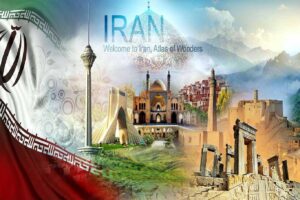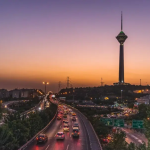Saint Mary Church, also known as Sourp Asdvadzadzin Church, or the Holy Mother of God Church, is one of the oldest and most significant churches in Iran. Located in the heart of Isfahan, this church is a testament to the rich cultural and religious heritage of the Armenian community in Iran. With a history dating back over 350 years, Sourp Asdvadzadzin Church is a cherished landmark that continues to attract visitors from around the world.
The History of Saint Mary Church
Saint Mary Church was built in the early 17th century by Armenian immigrants who had settled in Isfahan. The church was constructed on the site of an earlier church, Hakoup Church, that had been destroyed during the Safavid era. Over the centuries, the church has undergone several renovations and expansions, but it has managed to maintain its original architectural style and character.

Architectural Marvel: The Beauty of Saint Mary Church
The plan of the Saint Mary Church is a rectangular east-west hall with domes, which is typical of Armenian architecture. The building has several small arch-shaped domes, but its main dome, which has four windows, is located in the center of the building and is supported by arches resting on wide columns connected to the northern and southern walls.
These columns divide the interior space of the church into three related sections. The altar of the church is located in the eastern part of the building, and on both sides of it, there are two rectangular rooms. The materials used in the construction of the building are brick and adobe. The interior walls of the building are coated with plaster and painted with biblical scenes.
Surrounding the church, except for its eastern side, there is a portico with twenty stone columns that are connected to each other with arches. The exterior surface of the arches is decorated with glazed tiles in various colors, which adds to the beauty of the church’s exterior appearance.
also read : Explore the Vank Church in Isfahan
In the courtyard of the church, there are various buildings. In 1848, a bell tower was built on the western side of the church above its entrance. There is also a small prayer hall called St. Stepanos next to the southern side of the building. The Holy Hakoup Church is also located nearby, inside the courtyard of this church.
One of the most striking features of Saint Mary Church is its dome, which is decorated with colorful tiles and intricate patterns. The dome is a masterpiece of Safavid-era architecture and is considered one of the most beautiful domes in Iran.
Take part in our guided tours to Saint Mary Church, providing you a nice visit with a deeper understanding of this church’s history and architecture.
also read : Visit the Jolfa District
Saint Mary Church’s Religious Significance
Saint Mary Church is an important religious site for the Armenian community in Iran. The church is dedicated to the Holy Mother of God and is a place of worship and pilgrimage for Armenian Christians. The church’s religious festivals and celebrations, including Easter and Christmas, are an integral part of the Armenian community’s calendar and attract visitors from across the country.
Saint Mary Church’s Cultural Impact
Saint Mary Church is also an important cultural landmark in Iran. The church’s architecture, art, and religious significance reflect the deep roots of the Armenian community in Iran and their contributions to the country’s cultural and artistic traditions. The church is a testament to the community’s resilience and perseverance in the face of adversity and is a symbol of the community’s rich cultural heritage.
Preservation efforts
Over the years, Saint Mary Church has faced several challenges, including damage from earthquakes and neglect. However, the church has managed to survive and remains an important part of Iran’s cultural and religious heritage. In recent years, the Iranian government has made efforts to preserve and restore the church, recognizing its historical and cultural significance.
Visit Saint Mary Church
Sourp Asdvadzadzin Church is a remarkable testament to the rich history and cultural significance of the Armenian community in Iran. The church’s stunning architecture, art, and religious significance make it one of the most important landmarks in the country. Despite facing numerous challenges over the centuries, Sourp Asdvadzadzin Church has managed to survive and remains an important symbol of the Armenian community’s resilience and perseverance. Today, the church continues to attract visitors from around the world and serves as a reminder of the deep cultural and religious heritage of Iran’s Armenian community.
Let us know your ideas and comments about this church in the comment box below, we will be happy to hear from you!






















